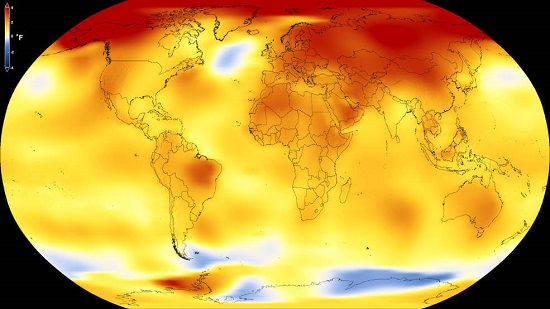Though global warming has always been a highly debated topic, that hasn’t stopped countries like China from beginning to make efforts to reduce their carbon footprint. Back in December, we reported that every public bus in China’s Shenzhen city was fully electric with all of the city’s taxis slated to make a similar switch by 2020.
If NASA’s latest report is anything to go by, these efforts may be well-founded.
According to the agency, 2017 was the second hottest year on record since global temperature measurements first became feasible in 1880. This puts 2017 directly behind 2016 as far as record high temperatures go and 1.62 degrees Fahrenheit warmer than the 1951-1980 mean.
This may not seem like a terribly significant increase at first glance but NASA claims it marks the continuation of Earth’s “long-term warming trend” driven by the increase in carbon dioxide and “other human-made emissions” being released into the atmosphere.

That said, some of these temperature fluctuations — specifically the ones that occurred during the third quarter of 2016 — can be attributed to “phenomena such as El Niño or La Niña” which warmed or cooled the upper tropical Pacific Ocean.
These weather oddities subsequently resulted in erratic wind patterns and global short-term temperature variations. NASA says that if such phenomena were removed from the record entirely, 2017 would take 2016’s place as the hottest year on record.
 iTechBahrain Information Technology Digital Marketing Web & Mobile Development Services
iTechBahrain Information Technology Digital Marketing Web & Mobile Development Services